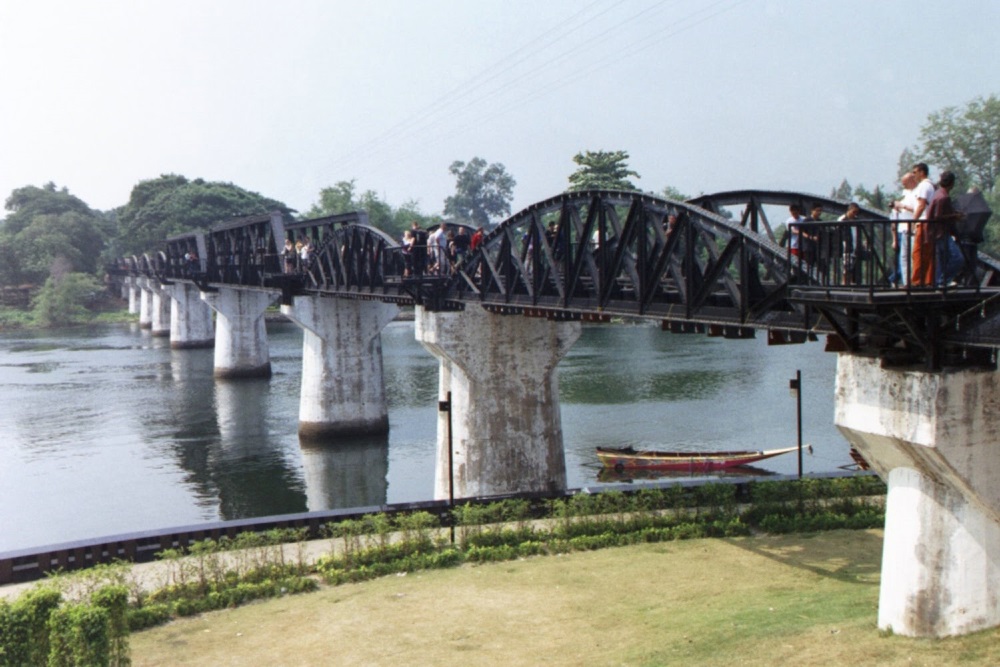Bridge on the River Kwai
This bridge, also known as Bridge 277, is the most famous part of the Burma Railway. On this location the railway crosses the Kware- or Mae Klong-rivier. First, a wooden bridge was constructed in February 1943. In June 1943, it was replaced by a concrete and steel one.
On 24th of June 1945, the bridge was destroyed by a bombardment of the 159 Squadron RAF. They mounted a combined operation with two other RAF Liberator squadrons on the bridge that day. Two Liberator aircraft of 159 Squadron, one captained by Canadian Flight Lieutenant Roy Borthwick, the other captained by New Zealander Warrant Officer Johnny Newman, destroyed a span of the bridge each by dropping delayed action bombs against two main supports from an altitude of about 500 feet. The rest of 159 Squadron demolished the nearby wooden trestle bridge thus totally severing the railway at this point.
After the war, the Japanese helped to repair the bridge. The two middle segments are reparations, the rest of the bridge is original.
The leader of the group of POWs who built the two bridges was British LtCol Toosey. He was an artilleryman not an engineer. He and the members of his 135th Field Regt --The Hertfordshire Yeomanry – were among the first POWs transferred to Thailand from Singapore in June 1942. They were sent to the camp at NongPLaDuk – the starting point of the Thai Sector of the Thai-Burma Railway. When the first 50 kilometers of track was laid to Kanchanaburi City, the entire Japanese HQ and administration moved there from BanPong. Here was the first major obstacle, the Mae Klong River. Toosey and a few thousand British POWs were moved there in November 43 and tasked with building a wood/bamboo bridge. While they were working on that, in Jan 43, thousands of Dutch POWs from the island of Java arrived. They were tasked with casting the pillars for the planned iron bridge that was being sent via Bangkok having been looted from Java.
After completing the first bridge in FEB 43, the British POWs moved over to work alongside the Dutch in reassembling the iron portion of the main bridge which still stands today.
LtCol Toosey was a very different leader than COL Nicholson in the book/movie. Due partly to the fact that they were co-located with the HQ, his men suffered few of the problems that would plague the many camps along the Railway. This group had the lowest death of any of the Railway work crews. Toosey went to great length, at times enduring severe punishments himself, to protect and defend his men; British and Dutch.
Once the bridges were complete most of the men were returned to NongPlaDuk. Later, many of them were sent to build an airfield at Ubon, TH.
It is also of note that while the Allied POWs of many nationalities were quickly evacuated and most were in their home country by the end of 1945, the Dutch were not so fortunate. Due to political unrest as the Dutch East Indies natives vied for independence and the post-war problems in the Netherlands, most of the Dutchmen languished in Thailand through 1946 and into 1947.
Do you have more information about this location? Inform us!
Source
- Text: Jerry Karwacki, John Stackhouse & Fedor de Vries
- Photos: Simon Armstrong




